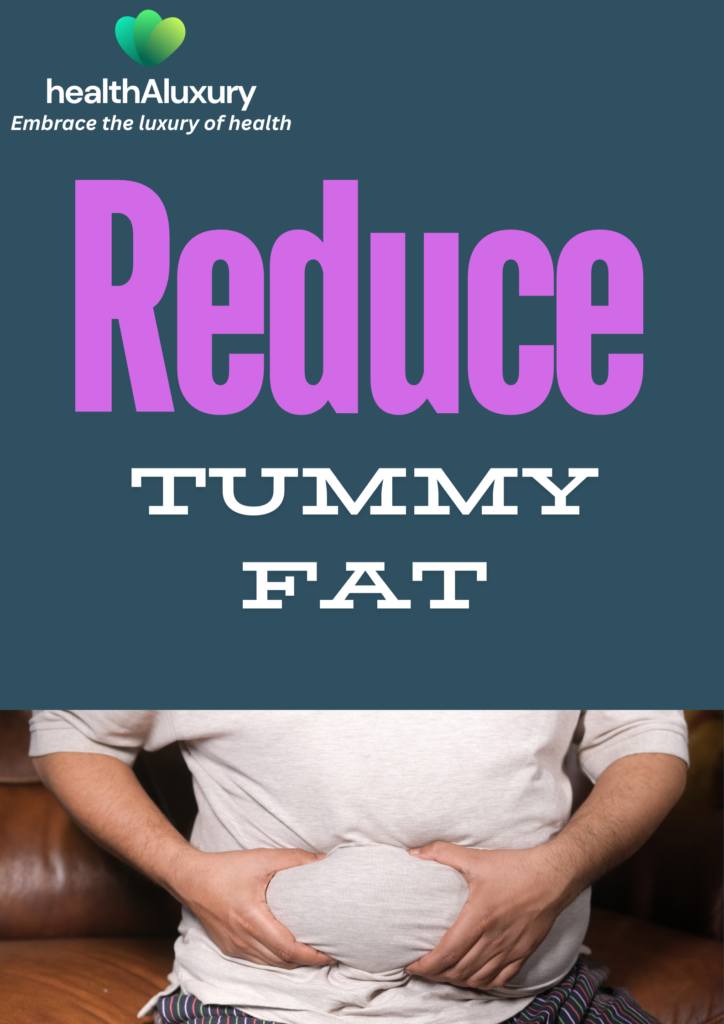How to Reduce Tummy Fat: Your Ultimate Guide

Are you looking to reduce tummy fat? Achieving a flat stomach is a common fitness goal for many people. While “spot reduction” isn’t possible, combining effective cardio, strength training, and core exercises can help you burn overall body fat, including around your belly. Here are the best exercises to reduce tummy fat and get you closer to your fitness goals.
1. Cardio Exercises to Burn Belly Fat
Cardio workouts are essential for burning calories and reducing overall body fat, including belly fat. Here are some of the top cardio exercises:
- Running or Jogging: A powerful way to burn calories and fat. Aim for 20-30 minutes at a moderate pace, at least 3-4 times a week.
- Cycling: Strengthens core muscles and burns fat effectively. Try cycling for 30-45 minutes a few times a week.
- Jump Rope: A high-intensity workout that burns significant calories in a short time. Start with 1-2 minute intervals, resting in between.
- Swimming: An excellent full-body workout that engages the core and burns a lot of calories. Aim for 30 minutes of continuous swimming.
2. Strength Training Exercises for Belly Fat Reduction
Strength training boosts metabolism by building muscle, which helps burn fat. Focus on exercises that engage multiple muscle groups, including the core:
- Squats: Target the core, back, and lower body muscles. Perform 3 sets of 15-20 reps.
- Deadlifts: Strengthens the core, back, and legs, promoting calorie burn and muscle growth. Start with lighter weights and do 3 sets of 10-12 reps.
- Push-Ups: A bodyweight exercise that works the chest, shoulders, triceps, and core. Complete 3 sets of 10-15 reps.
3. Core Exercises to Tone Your Stomach
Core exercises are crucial for toning and strengthening the abdominal muscles, leading to a flatter, more defined stomach:
- Plank: Hold a plank position on your elbows or hands, keeping your body in a straight line. Start with 30 seconds and work up to 1-2 minutes.
- Bicycle Crunches: Lie on your back, lift your shoulders, and alternate bringing your knees to your chest while twisting your torso. Aim for 3 sets of 15-20 reps per side.
- Leg Raises: Lie on your back with your legs straight, lift them to a 90-degree angle, then lower slowly. Perform 3 sets of 12-15 reps.
- Russian Twists: Sit with your knees bent and feet off the ground. Twist your torso to each side, tapping the floor with your hands. Do 3 sets of 15-20 reps per side.
4. High-Intensity Interval Training (HIIT) for Fat Loss
HIIT involves short bursts of intense exercise followed by rest periods, maximizing fat burning and cardiovascular fitness:
- HIIT Workout Example:
- 30 seconds of high knees
- 30 seconds of rest
- 30 seconds of mountain climbers
- 30 seconds of rest
- Repeat for 15-20 minutes
Tips for Reducing Tummy Fat Fast
- Eat a Balanced Diet: Focus on lean proteins, whole grains, healthy fats, fruits, and vegetables to support fat loss.
- Stay Hydrated: Drink plenty of water to aid digestion and metabolism.
- Get Quality Sleep: Aim for 7-9 hours per night, as lack of sleep can contribute to weight gain.
- Manage Stress: Incorporate stress-reducing activities like meditation, deep breathing, or yoga to prevent stress-induced weight gain.
Conclusion – Reduce Tummy Fat
To reduce tummy fat, incorporate a mix of cardio, strength training, and core exercises into your fitness routine, along with a healthy diet and lifestyle. Remember, consistency is key. Stick to a regular exercise routine to achieve your goals and enjoy long-term health benefits.
By following these strategies and focusing on overall wellness, you’ll be well on your way to reducing tummy fat and achieving a healthier, more toned body.
